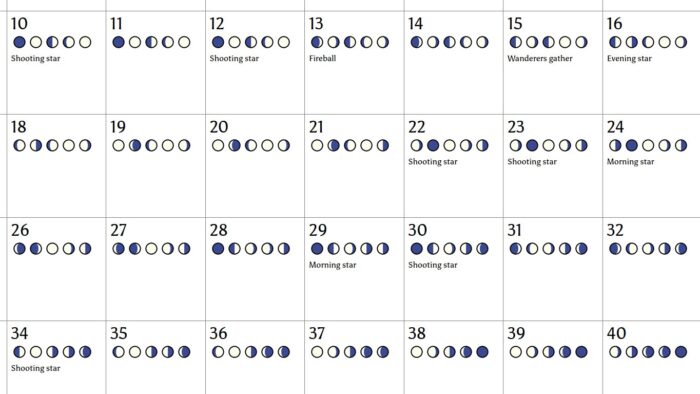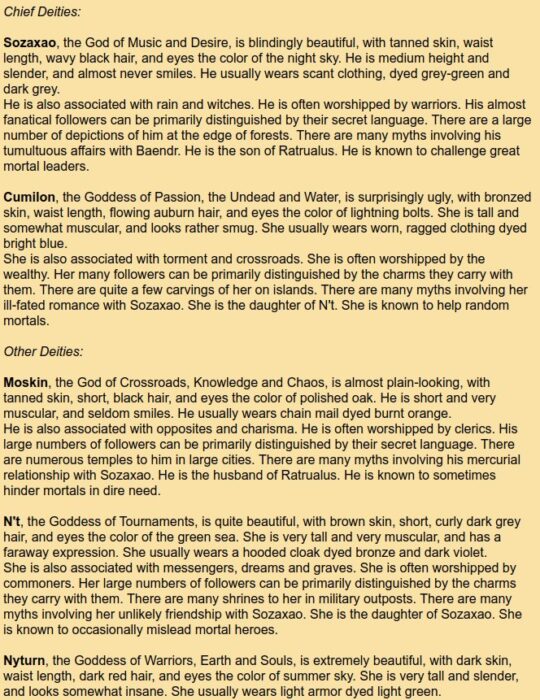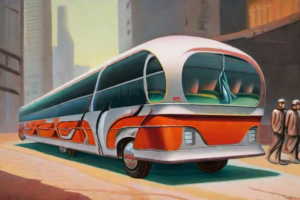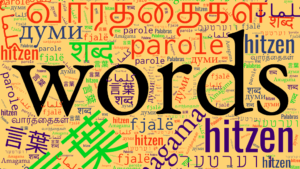A few days ago, I read a post asking readers what elements took them out of the story. The reason might be stylistic or a functional decision the writer had taken. Amongst the more popular reasons for being taken out of the moment were secondary world anachronisms. For example, the characters cry out the name of a present-day primary world deity, or the world has the same days of the week or month names as our primary world. Here are three ways to avoid secondary world anachronisms.
Table of Contents
What is a Secondary World?
A secondary world is an imaginary world, usually quite different from our primary world – the one you’re in right now (calling it the real world is a little arrogant, don’t you think?). Think of Middle-Earth, or Midkemia, or even Amber (although our primary world features as a shadow within the Amberverse). Usually there’s at least one significant difference between our world and the secondary world. The existence of magic, for instance. Sometimes the differences are stark, with disparate histories, cultures, flora, fauna, and people. Even the way the characters perceive their world is distinct from the way we perceive ours.
1. Secondary World Calendars

The measurement of time differs depending on the culture. Even something as basic as what year it is varies. While much of the world considers the current year (as of this writing) to be 2024 CE, it is also the Year of the Dragon according to the Chinese, 5784 in the Hebrew calendar, 1445 in the Hijri calendar, and 2567 according to the Buddhist calendar. And that’s just the major ones. There are many, many others.
Does your secondary world have a separate calendar (or three)? If so, here are some things to consider to make them truly unique:
- When does your calendar start? What event (if any) counts as year zero?
- How many days are there in each year? What are the days called?
- How long are the months? What are the months called?
- Are there leap days?
- Is your calendar based on the passage of the sun, or the moon, or some other method?
- Does your calendar change over time? Do your cultures each have different calendars?
Creating a calendar (or three) helps you avoid those basic sorts of anachronisms, and it adds flavour to your world. It doesn’t need to take long to create one, either. This fantasy calendar generator can provide a solar calendar in moments.
2. Secondary World Pantheons

In the English-language world, the days of the week are named after the Germanic gods. In the Romance languages (French, Italian, Spanish, etc), they’re named after the Roman gods. Many other cultures use similar naming standards. Gods (even just their names) clearly play an important role in our modern primary world cultures, even for the irreligious. During previous eras, gods (and their representatives) were intricate to every facet of life.
Many fantasy-based stories are set during pseudo-medieval to quasi-renaissance eras. Using our own history as a template, would indicate that the church in these worlds might have untold power. But how would it manifest? Can they perform magic? Or is the power merely social or political? Some things to consider:
- Are the gods real? Or are they just made up?
- Do the different nations or cultures in your world worship different gods? Or all the same?
- What stories form part of the religious dogma?
- What sort of ethos does the church have? What rites do their members practise?
- What tithes are members required to pay and how often?
- Are religious holidays compulsory?
- What happens to non-believers?
Having a rich religious background for your secondary world not only helps with those pesky secondary world anachronisms, it offers so many options for deepening your characters. You can use online generators, like this pantheon generator, to help alleviate some of the work too.
3. Units of Measurement

The first two items in this list are fairly obvious tropes. While they might not address every element I’ve mentioned above, most stories involving secondary worlds contain alternative calendars and/or variations on gods, goddesses or some other form of deity worship.
However, very few go as far as creating their own units of measurement. Or several. Which is a shame because before the industrial age (when travel became more widespread), it wasn’t uncommon for different regions or even cities to have different standards when it came to measuring, whether it be length, weight, volume, or whatever.
For instance, before the implementation of the metric system (in the 19th century), one meile (German for mile) could equal:
- 7415m in Bavaria
- 6700m in Breslau (now Wroclaw, Poland)
- 9062m in Saxony
Not only does creating your own units of measurement give your secondary world a point of difference, they can become character building moments as well. Travelling becomes potentially confusing (or hilarious). Ordering a pint in different towns might result in quite a substantial difference in the amount of beer the character receives (this is still a problem in some states of Australia).
Some things to consider when creating alternate units of measurements:
- Our current modern world units of measurements are based upon very precise scientific observations (usually involving the speed of light or the amount of decay of an atomic isotope), but during previous eras they have been based on a whole range of physical measures. From the size of a barley corn to the distance from the elbow to the tips of the fingertips, to how far someone can walk in an hour. What are your units based upon?
- In the metric system, you can easily convert between the different measures (distance, weight, energy, etc). Can you do the same with your unit measurements (or is it like the Imperial system?).
Bonus: Create Your Own Conlangs
As a long-term conlanger, I am somewhat biased, but one way to avoid anachronisms in your secondary world is to create your own constructed language (conlang). Even a few words is enough to add flavour to your world, and it’s a great way of avoiding anachronisms. You can even use the conlang to create your character names. Say goodbye to Dave from Perth. Say hello to Gery Aryth (meaning friendly beast in the local dialect) from the city of Tumunzan (meaning Help. We are lost, in the ancient language).
A great way to dip your toe in the water of language creation is to use this abridged version of the Language Construction Kit. I also recommend (and use) Polyglot to help you keep track of your new lexicon.













